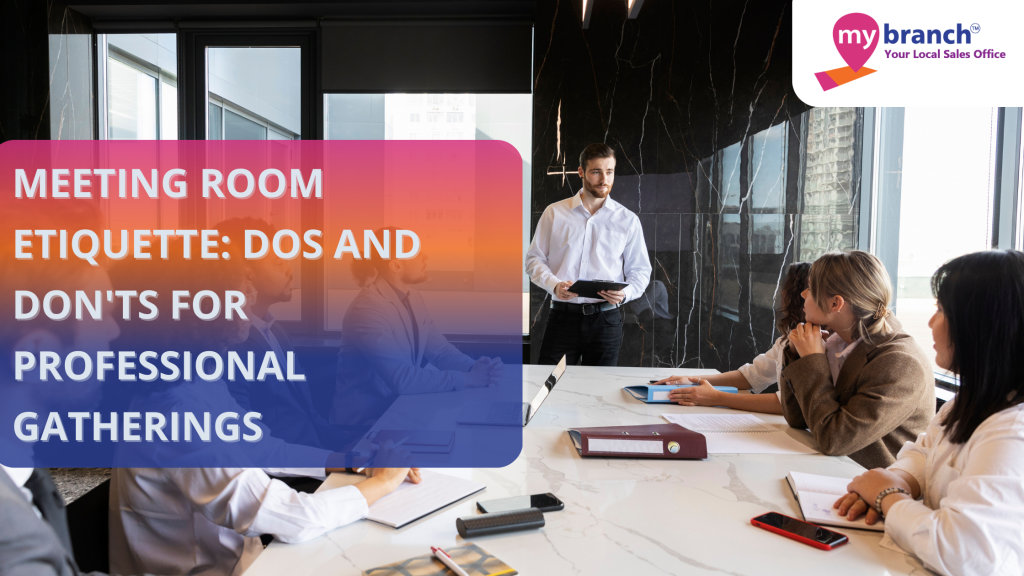
In the bustling world of business, effective communication is paramount. A significant component of this communication takes place within the confines of meeting rooms and conference spaces.
These rooms are the focal point for brainstorming sessions, presentations, and important decision-making processes. However, in the midst of discussions and collaborations, it’s easy to overlook the importance of maintaining decorum and etiquette within these spaces.
In this guide, we’ll delve into the dos and don’ts of meeting room etiquette, ensuring that your professional gatherings run smoothly and leave a lasting positive impression.
Section 1: Punctuality Matters
The cardinal rule of any professional gathering is punctuality. Arriving late not only disrupts the flow of the meeting but also reflects poorly on your professionalism. Aim to arrive a few minutes early, allowing ample time to settle in, review any materials, and greet your colleagues cordially.
If unforeseen circumstances arise, promptly inform the organizer or attendees of your delay and provide an estimated time of arrival. Respect for everyone’s time sets the tone for a productive meeting and fosters a culture of accountability within the team.
Section 2: Respect the Space
Treat the conference room with the utmost respect, akin to how you would treat your own workspace. Keep the area tidy by disposing of any trash and neatly arranging chairs and materials before departing. Avoid cluttering the table with unnecessary items, as it can distract from the purpose of the meeting.
Additionally, be mindful of any equipment or technology present in the room, ensuring that they are used appropriately and returned to their original state after use. By demonstrating reverence for the space, you contribute to a professional atmosphere conducive to collaboration and focus.
Section 3: Mind Your Manners
Etiquette extends beyond mere actions; it encompasses courteous behaviour and interpersonal skills. During meetings, practise active listening by maintaining eye contact with the speaker and refraining from interrupting others. Offer constructive contributions to the discussion while being mindful of the time and relevance of your input.
Moreover, be attentive to non-verbal cues, such as body language and facial expressions, to gauge the engagement and understanding of your peers. Politeness and civility go a long way in fostering a harmonious environment where ideas can flourish.
Section 4: Dress Appropriately
Your attire speaks volumes about your professionalism and commitment to the meeting’s agenda. Opt for attire that aligns with the level of formality expected within your organization and the nature of the gathering.
While it’s essential to dress for success, avoid outfits that are too casual or distracting, as they can detract from your credibility and the seriousness of the discussion. By dressing appropriately, you convey respect for the occasion and convey a sense of competence and professionalism to your peers.
Section 5: Technology Etiquette
In an era dominated by digital devices, it’s crucial to observe proper technology etiquette during meetings. Silence or set your phone to vibrate to minimize disruptions, and refrain from checking messages or emails unless absolutely necessary. When utilizing laptops or tablets for note-taking or presentations, ensure that they are muted to avoid unexpected sounds.
Moreover, be mindful of sharing screens or documents, verifying that they contain no sensitive or confidential information that could compromise security. By exercising discretion and restraint with technology, you demonstrate consideration for your colleagues and maintain focus on the meeting’s objectives.
Section 6: Engage Constructively
Meetings are collaborative endeavours aimed at generating ideas, solving problems, and making decisions collectively. Embrace this spirit of collaboration by actively participating in discussions and offering constructive feedback when appropriate. Avoid dominating the conversation or dismissing others’ viewpoints, as it stifles creativity and undermines the value of diverse perspectives.
Foster an inclusive environment where everyone feels empowered to contribute their insights and expertise, regardless of their position or seniority. By embracing a collaborative mindset, you contribute to a dynamic and inclusive meeting culture that drives innovation and success.
Section 7: Be Mindful of Time
Time is a precious commodity in the corporate world, and meetings are no exception. Respect the allocated time for the meeting by adhering to the agenda and avoiding tangential discussions that derail progress. If you notice the conversation veering off course, gently steer it back on track or suggest tabling unrelated topics for future discussions.
Additionally, be mindful of speaking time, allowing others the opportunity to voice their opinions and share their expertise. By honouring time constraints and staying focused, you maximize the efficiency and effectiveness of the meeting for everyone involved.
Section 8: Follow Up and Follow Through
The conclusion of a meeting marks the beginning of action and implementation. Take diligent notes during the meeting, capturing key decisions, action items, and assigned responsibilities. Within a reasonable timeframe, circulate meeting minutes or a summary to all attendees, ensuring clarity on next steps and expectations.
Follow up on action items promptly and communicate progress or obstacles as they arise to keep momentum going. By demonstrating accountability and follow-through, you instil confidence in your colleagues and reinforce a culture of reliability and achievement.
Section 9: Reflect and Iterate
After the meeting adjourns, take a moment to reflect on its effectiveness and identify areas for improvement. Solicit feedback from participants to gain insights into what worked well and where there is room for enhancement.
Use this feedback to iterate on future meetings, refining processes and strategies to optimise outcomes continually. By fostering a culture of continuous improvement, you cultivate a dynamic and responsive approach to meetings that drives innovation and excellence.
Mastering meeting room etiquette is not merely about adhering to a set of rules; it’s about fostering a culture of respect, collaboration, and productivity within your organisation. By embracing punctuality, respecting the space, and practicing courtesy and engagement, you elevate the calibre of your professional gatherings and enhance your reputation as a conscientious and effective team member. Incorporate these dos and don’ts into your meeting routine to ensure that every interaction is a testament to your commitment to excellence.
